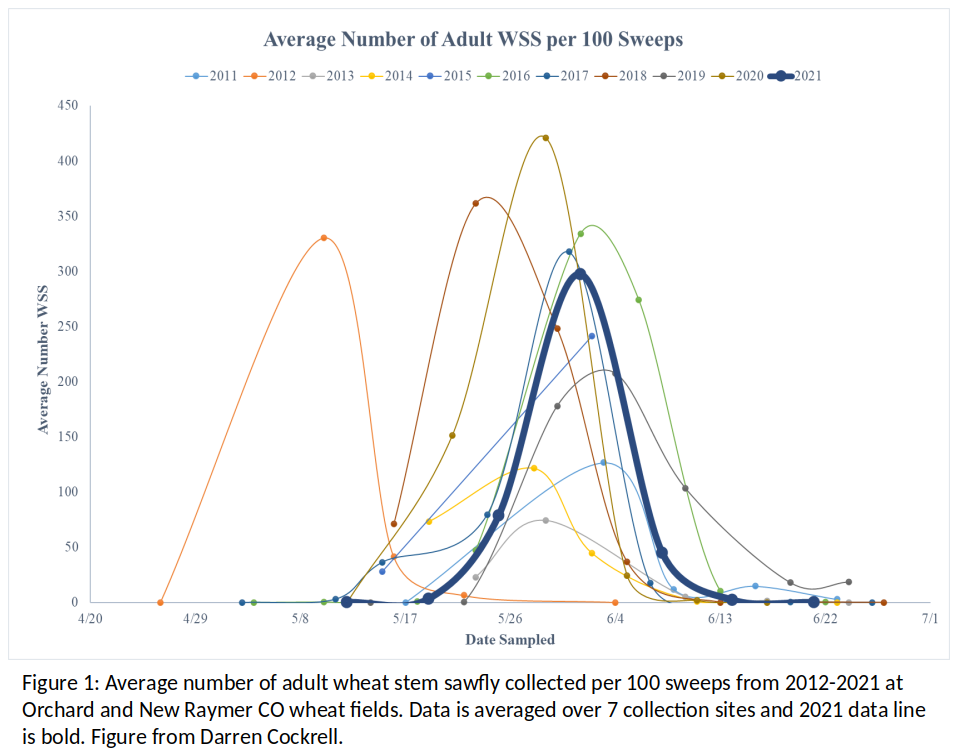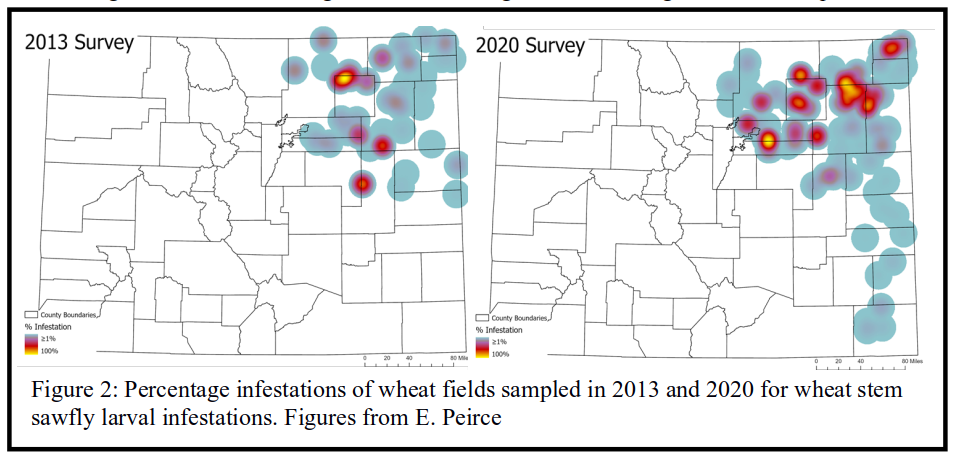This website uses cookies so that we can provide you with the best user experience possible. Cookie information is stored in your browser and performs functions such as recognising you when you return to our website and helping our team to understand which sections of the website you find most interesting and useful.
Pest Update
Wheat stem sawfly flight and survey in Colorado
Darren Cockrell and Dr. Punya Nachappa
Colorado State University Extension
The first recorded Wheat stem sawfly (WSS) adults this year were on May 19th in Orchard, CO. Adult emergence likely occurred earlier in the southern parts of the state where the wheat was further along in growth stage. Seven collection sites in Weld County have been monitored during the WSS flight since 2011 to determine the general trend of flights from year to year (Figure 1). In 2021, flight at these locations lasted approximately 5 weeks and peaked with an average of 297 adults found across all collection locations. A video of peak WSS flight can be found at: https://imgur.com/a/KWHcqzj.

Figure 1: Average Number of Adult WSS per 100 Sweeps
A survey of WSS infestations across the state is conducted yearly. The 2021 survey has not been completed yet, however a summary of the results of the 2013 survey compared to the 2020 survey can be found in Figure 2. Generally, the number of locations with WSS found has increased each year, the severity of infestations has increased, and how far south in the state WSS is found has spread.

Figure 2: Percentage infestations of wheat fields sampled in 2013 and 2020 for wheat stem sawfly larval infestations.
Currently, management of WSS is limited to cultural practices and host plant resistance. WSS host range is limited to native grasses and cereal grains, so rotating to a non-host species will reduce the population. Solid and semi-solid varieties of wheat, such as Fortify SF, have also been shown to deter WSS larval feeding and may lodge less frequently under WSS pressure. Currently there are no viable chemical control methods for WSS.

